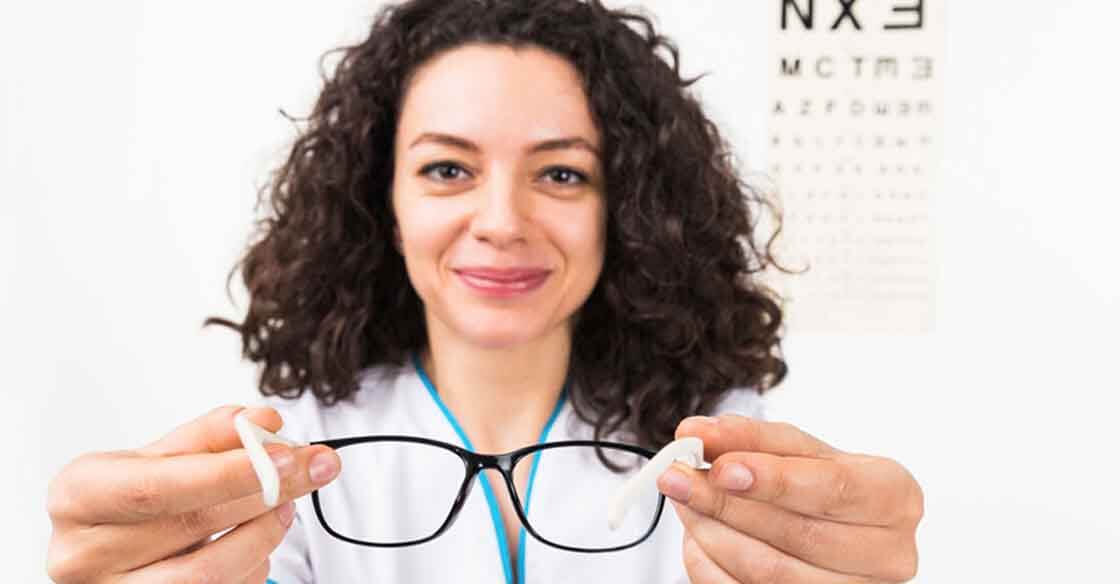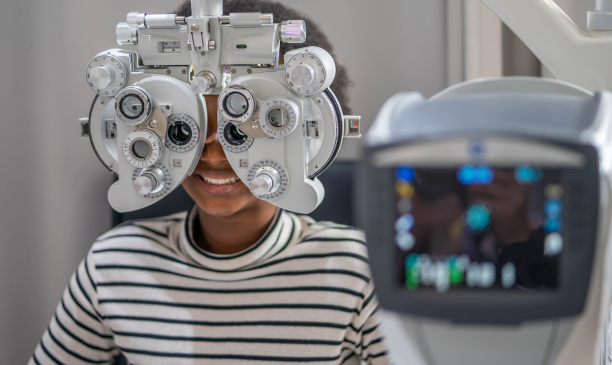Reliable Eye Doctor for All Your Vision Needs in Riverside
Reliable Eye Doctor for All Your Vision Needs in Riverside
Blog Article
The Comprehensive Eye Exam: What to Anticipate During Your Visit to the Eye Doctor
A browse through to the eye doctor for a comprehensive eye exam is greater than a routine check-up; it is a vital action in guarding your aesthetic health and wellness. From the first conversation of your case history to the precision of the visual acuity test, each component of the test offers a certain objective. But just what occurs during the eye health analysis, and just how does it affect the prescription procedure? Comprehending these aspects is necessary for those who want to keep optimal eyesight. As we discover each element, the relevance of follow-up referrals will certainly also become clear.
Initial Consultation
The first assessment during an eye exam functions as a vital foundation for comprehending an individual's visual health and wellness needs. This phase sets the tone for the whole evaluation procedure, permitting the eye doctor to gather necessary information about the patient's medical background, lifestyle, and certain vision worries. By carefully assessing any kind of pre-existing conditions, drugs, or previous surgical treatments, the eye care specialist can customize the evaluation to attend to individual requirements successfully.

Moreover, the preliminary consultation is an opportunity for people to articulate any type of inquiries or problems, fostering a collaborative relationship with their doctor. This interaction not only makes sure that the patient feels educated and comfortable yet additionally encourages them to take part proactively in their eye health and wellness administration. Collectively, these conversations make it possible for the optometrist to create an individualized assessment strategy, making certain ideal care and precise medical diagnosis.
Aesthetic Acuity Examination
Beginning the core components of an eye assessment, the visual acuity examination is designed to analyze the sharpness and clarity of a patient's vision. This essential assessment aids establish how well a person can determine letters or symbols at a standardized distance, generally using a Snellen graph (Optometrist Riverside). The chart makes up rows of letters that lower in size from top to base, with the client placed at a normal range of 20 feet
During the test, the individual is asked to cover one eye and review out loud the smallest line of letters they can see clearly. This process is duplicated for the various other eye. The outcomes are taped as a portion, with 20/20 vision indicating normal aesthetic acuity-- where the client can see at 20 feet what an individual with typical vision can see at that distance.
The visual skill examination likewise recognizes possible refractive mistakes such as hyperopia, astigmatism, or nearsightedness, which could require rehabilitative lenses. By developing a baseline of aesthetic efficiency, the test is a crucial analysis device that assists the eye care professional in developing a proper therapy plan tailored to the person's special aesthetic demands.
Eye Health Analysis
Complying with the aesthetic skill test, a comprehensive eye health assessment is conducted to guarantee the general health of the eyes. This vital segment of the eye examination involves a comprehensive examination of both the outside and interior structures of the eye.
Next, attention shifts to the inner frameworks. Via making use of ophthalmoscopy or fundus photography, the retina, optic nerve, and capillary are carefully evaluated. This action is essential for determining problems such as retinal detachment, glaucoma, or diabetic retinopathy. Oftentimes, student extension is carried out to enhance visibility of the interior eye structures, although this might lead to their website short-term light level of sensitivity for the person.
In addition, intraocular pressure is measured to screen for glaucoma risk. This is typically done making use of tonometry, which can discover elevated stress levels that could suggest prospective damage to the optic nerve. Jointly, these assessments form a detailed analysis to maintain ocular health and wellness.
Refraction and Prescription
Refraction is an advanced treatment performed by eye treatment specialists to determine the accurate lens power needed to fix refractive errors such as nearsightedness, presbyopia, hyperopia, and astigmatism. The goal of this procedure is to analyze just how light bends as it passes through the eye, permitting the specialist to determine whether restorative lenses are necessary for improved aesthetic skill.
Throughout the refraction procedure, the person is asked to check out a phoropter, a device that includes numerous lenses. The practitioner will methodically alter these lenses and ask the client to compare clearness between alternatives until the very best feasible vision is achieved. This treatment is important in crafting a precise prescription that specifies the appropriate lens power for eyeglasses or contact lenses.
The prescription stemmed from this treatment not just optimizes vision yet additionally works as a structure for picking appropriate corrective glasses. It is vital to make certain that prescriptions are routinely updated, as changes in vision can happen with time, emphasizing the relevance of regular eye assessments. This meticulous focus to detail aids preserve clear, comfortable vision in day-to-day live.
Follow-Up Recommendations

During a follow-up see, the eye medical professional will certainly carry out a series of tests to evaluate aesthetic skill dig this and check for any type of modifications in vision that could necessitate an update to the prescription. Additionally, the follow-up offers a possibility to go over any kind of discomfort or problems experienced with present eyewear. Adjustments can be made to make certain convenience and efficiency, whether through about his lens adjustment or frame adjustments.
For people with ongoing conditions such as glaucoma, diabetes-related eye problems, or macular degeneration, more regular follow-ups may be essential. These appointments are important for handling and possibly slowing the development of eye illness. Sticking to these recommendations can substantially add to preserving visual health and wellness and stopping long-lasting difficulties.
Conclusion
The comprehensive eye examination is a crucial procedure for maintaining aesthetic health, including a thorough analysis of medical history and vision problems. Key components include the aesthetic skill test, which examines sight quality, and the eye health analysis, which takes a look at the overall condition of the eyes.
A browse through to the eye physician for a detailed eye examination is more than a routine examination; it is a vital step in safeguarding your aesthetic health.Kicking off the core elements of an eye exam, the aesthetic acuity test is designed to assess the intensity and clarity of an individual's vision.Complying with the aesthetic acuity examination, a comprehensive eye wellness analysis is performed to make sure the overall well-being of the eyes. These gos to enable the eye treatment professional to monitor modifications in vision, update prescriptions, and evaluate the total health of the eyes. Secret components include the aesthetic acuity test, which assesses vision clearness, and the eye wellness analysis, which checks out the general condition of the eyes.
Report this page